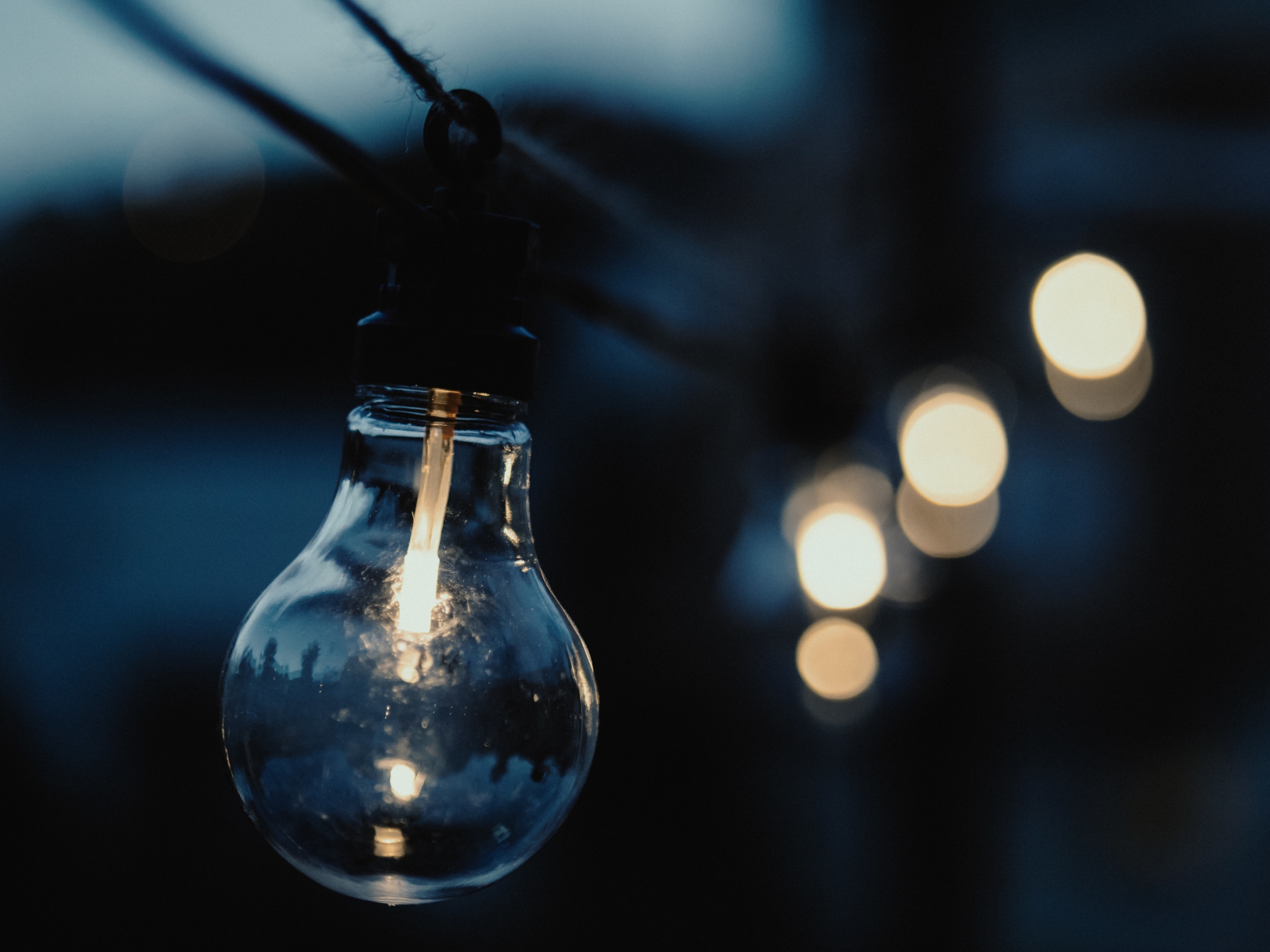Imagine living in a world without light, having to do everything in natural light. Then imagine a world with no computers, cell phones, televisions, tablets, traffic signals, dishwashers, washing machines, etc. You wouldn’t be able to read this blog post, nor would we even be able to type or publish it, without electricity. Having electricity is something we’re all used to, so we often overlook how important it is in our lives.
What is Electricity?
The previous list of items are all things you probably envision when you think of electricity, but when you flip on a light switch or run a load of laundry, how is electricity made and what does the process entail? Moreover, what exactly is electricity?
Electricity is a flow of electric charge and is a form of energy. As you may recall learning in science class, all matter on Earth (e.g., household objects, animals, plants, humans, and also energy) is formed by tiny particles called atoms. Each atom consists of protons (which carry a positive charge), neutrons (which carry no charge), and electrons (which carry a negative charge). Protons and neutrons are closely packed together in the middle of an atom, and electrons sphere around the nucleus. When electrons hop from one atom to another, they build magnetic forces, forming an electrical current and creating energy.
Where Does Electricity Come From?
Electricity can occur naturally through lightning bolts, or it can be generated by humans in a variety of different ways. The electricity we use to do the everyday activities mentioned above is obtained through generators that work with magnets to produce it. The process of obtaining electricity through generators is the same despite the fuel source used – a big magnet surrounds a copper wire, producing the flow of electrons across atoms, creating an electric current.
The United States uses many different sources and technologies to generate electricity. These include:
- Fossil fuels (i.e., natural gas, coal, and petroleum) – These fuel sources all work very similarly in generating electricity. They function by heating water to create steam which helps start the movement of turbines. Fossil fuels are the largest source of energy for electric generation. In 2019, natural gas accounted for approximately 38% of all electricity generation in the U.S., coal roughly 23%, and petroleum less than 1%.
- Nuclear energy – Nuclear energy is created through the process of splitting atoms (more specifically, uranium atoms). When a uranium atom is split, it becomes two smaller, lighter atoms, and because energy doesn’t just disappear, the “lost” mass is converted into heat, which is used to produce electricity. Last year, about 20% of total electricity generation in the United States was nuclear.
- Renewable energy (including wind, water, solar, biomass, and geothermal) – Renewable energy sources were the source of almost 17% of total electricity generation in America in 2019. Hydro-powered plants utilize dams constructed across rivers to hold back water, redirecting it through pipes to fall against the blades of massive turbines, causing the turbines to move. Wind turbines function similarly. The kinetic energy of the wind moves the blades of the wind turbines around a rotor to activate it. Once the shaft starts spinning, it activates the generator and creates electricity. In 2019, hydropower plants accounted for 38% of electricity generated from renewable sources, being 7% of the total electricity generated in the United States. Wind energy was the source of about 42% of electricity generated from renewable sources, accounting for 7% of the total U.S. electricity generated in that same year.
Now that you’re more familiar with the process of electricity generation and some of its sources, you might be curious to explore the options for how you power your home. Visit Spring Power & Gas to learn more about our innovative energy and natural gas products today.


